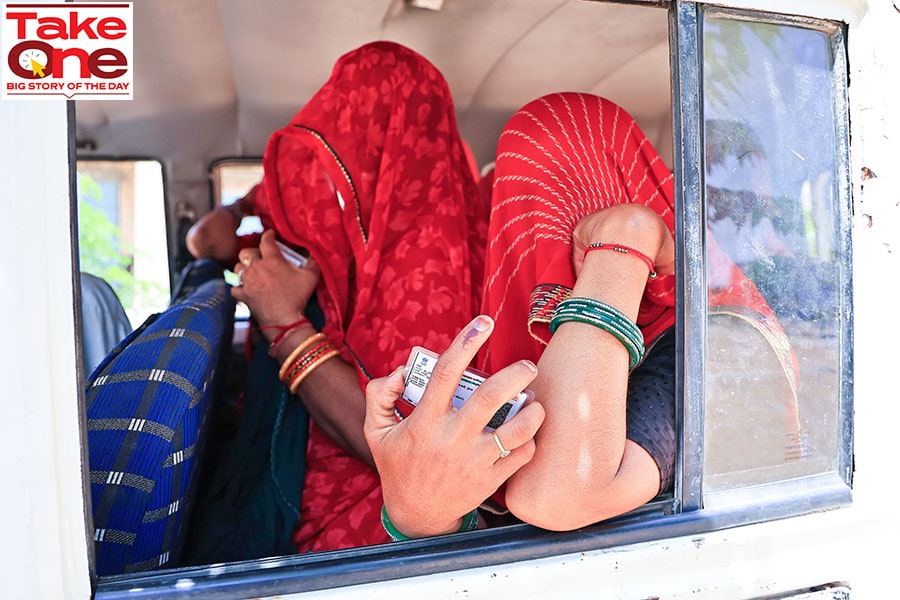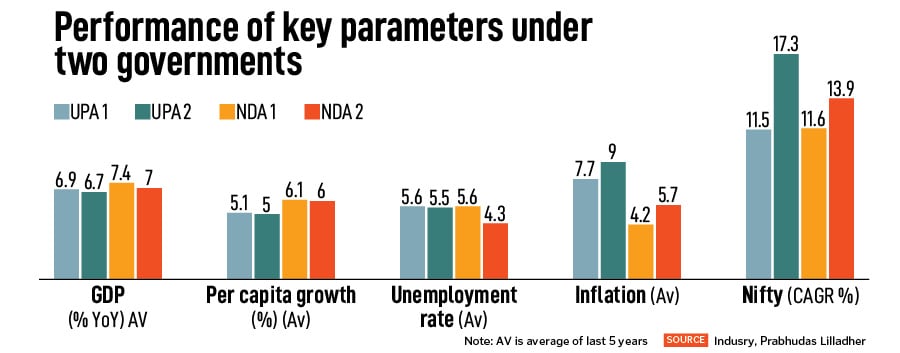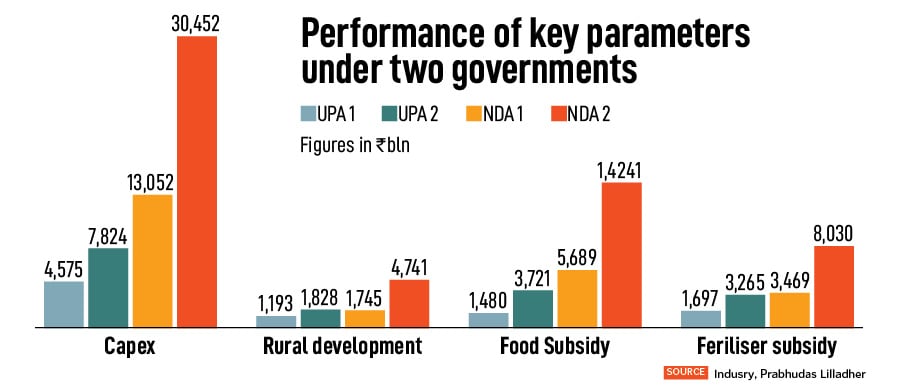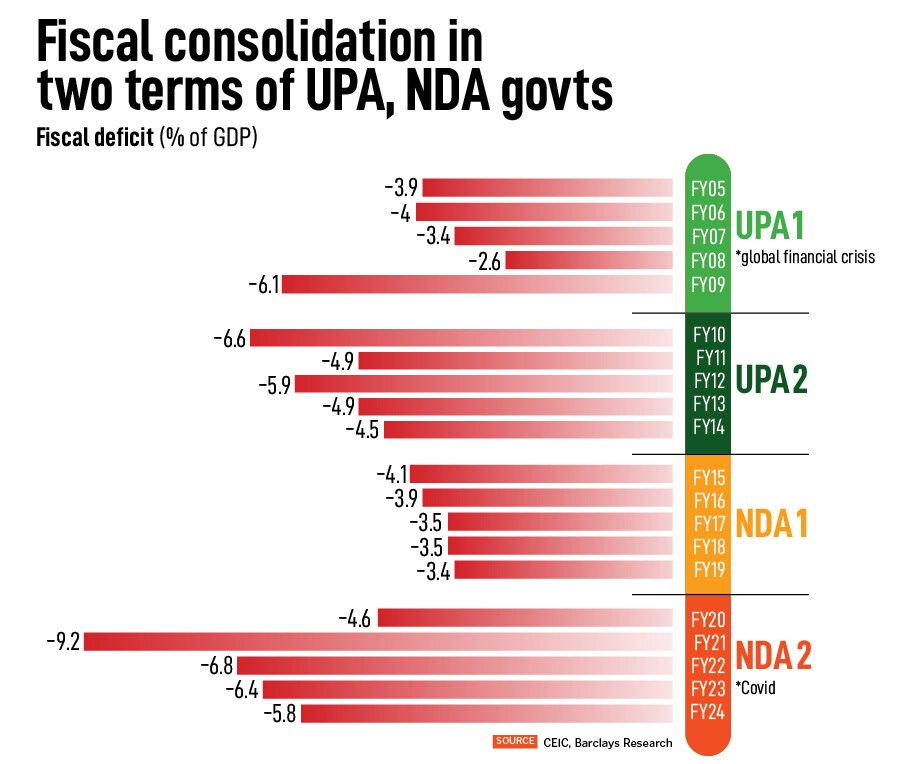
Inside the 2024 elections: Policy complacency risk or is it too optimistic?
Unemployment, extension of welfare schemes, inflation, youth, women, farmers, the poor and the minorities, and development are some of the key themes. But what does the poll bring for us?
 Women are displaying their fingers marked with indelible ink after voting in the first phase of the Lok Sabha elections in Mahar Khurd Village, Jaipur, Rajasthan, India, on April 19, 2024.
Image: Vishal Bhatnagar/NurPhoto via Getty Images
Women are displaying their fingers marked with indelible ink after voting in the first phase of the Lok Sabha elections in Mahar Khurd Village, Jaipur, Rajasthan, India, on April 19, 2024.
Image: Vishal Bhatnagar/NurPhoto via Getty Images
As if the scorching summer wasn’t enough, the raising tempo around general elections in India with 969 million eligible voters going to polls, is adding to the sweat. With Prime Minister Narendra Modi's BJP-led government looking to win a third consecutive term, this election is set to be the largest democratic exercise ever held.
However, the most important and critical factor to consider now for stock markets, corporates and the overall economy is if the polls are too optimistic about the win. Is there still room for surprise? Or is there a risk of policy complacency?
As the polls point to a larger BJP mandate implying a policy continuity, a closer look at most political parties’ manifestos indicates the risks as well. “A larger mandate for the BJP government, as suggested by opinion polls, would make it easier for the government to pass its non-economic priorities, while economic reform plans repealed earlier could also be reintroduced in more acceptable forms,” says Shreya Sodhani, economist, Barclays.
Sodhani thinks a bigger winning mandate for the BJP could contribute to an environment of political and policy continuity, fostering greater confidence in the business community within the country as well as among foreign investors. She adds that the frontloading of fiscal consolidation in the interim budget in an election year highlights the government's fiscal prudence, and this stance is unlikely to change.











